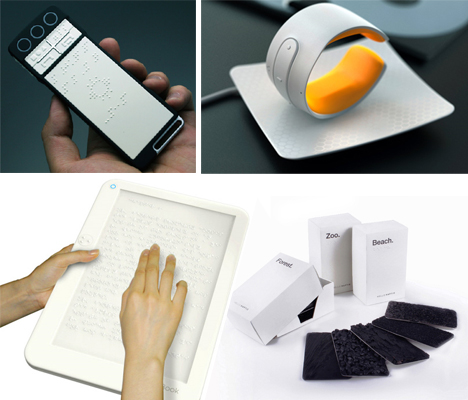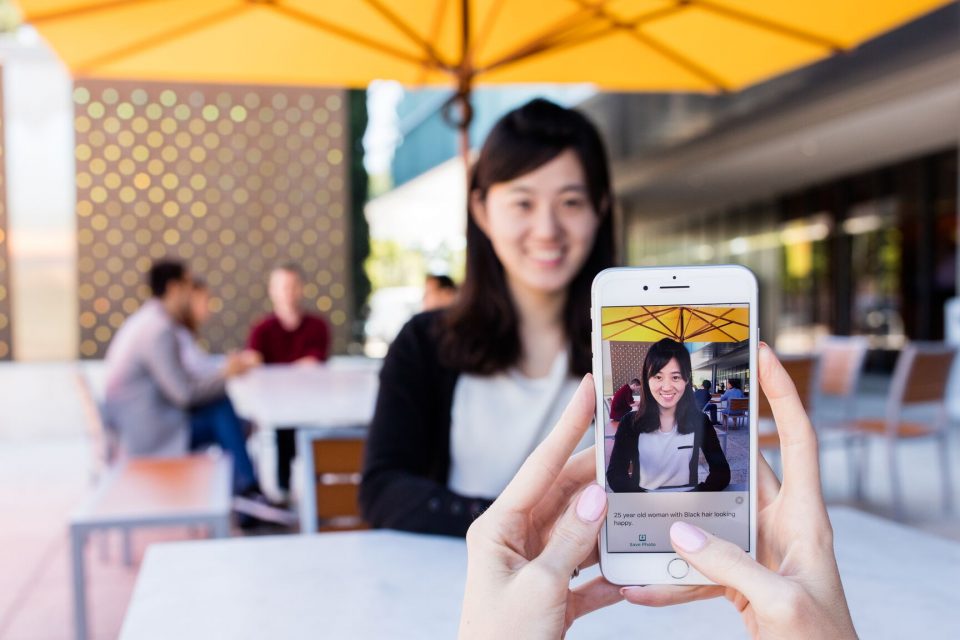Screen Readers for the Blind: Accessing Data Without Barriers
Wiki Article
Discover Ingenious Devices Designed for the Visually Impaired
The growth of cutting-edge tools for the visually impaired stands for a substantial development in availability and freedom. Technologies such as smart glasses with AI capabilities and mobile applications developed to give acoustic summaries are reshaping daily experiences for users. Furthermore, wearable tools that use haptic feedback enhance environmental understanding, while contemporary Braille technologies offer new methods to engage with text. As these tools continue to progress, their influence on the lives of those with visual impairments raises crucial concerns regarding the future of inclusivity and freedom in various aspects of life. What lies in advance in this technical landscape?Smart Glasses for Navigating

Smart glasses designed for navigating are changing the method aesthetically damaged individuals engage with their environment. These sophisticated tools use a combination of video camera modern technology, man-made knowledge, and acoustic feedback to offer real-time information concerning surroundings. By utilizing barrier discovery systems, clever glasses can signal customers to prospective threats, making it possible for more secure movement in both strange and acquainted setups.
The integration of GPS technology better boosts navigating capacities, permitting individuals to get auditory directions as they move. This hands-free approach not only fosters freedom yet also encourages aesthetically damaged individuals to navigate metropolitan landscapes with raised self-confidence. Furthermore, lots of clever glasses are equipped with features that identify landmarks and street signs, supplying contextual info that improves the user experience.
In addition, the development of these devices is constantly advancing, with business working to improve the precision of object acknowledgment and expand the variety of navigational functions. As clever glasses end up being more budget-friendly and accessible, they hold the possible to substantially change day-to-day live for visually impaired customers. Eventually, these cutting-edge devices represent an essential step towards inclusivity, offering enhanced wheelchair and a greater sense of freedom for individuals browsing the globe around them.

Mobile Application for Daily Living
Just how can mobile applications improve the lives of visually damaged individuals? Mobile apps are revolutionizing the means aesthetically impaired users navigate their environments, take care of everyday tasks, and accessibility info. These applications offer important support via different functionalities, fostering self-reliance and enhancing lifestyle.A number of ingenious mobile apps are created especially for day-to-day living. As an example, apps like Be My Eyes attach aesthetically impaired individuals with sighted volunteers by means of video telephone calls, enabling them to receive real-time help with tasks such as reviewing labels or browsing unfamiliar areas. Seeing AI, created by Microsoft, uses man-made knowledge to describe surroundings, reviewed text, and determine things, effectively transforming a mobile phone right into an effective tool for everyday help.
In addition, navigation apps customized for the aesthetically damaged, such as Aira and BlindSquare, provide audio-based instructions and ecological details, making it possible for users to traverse their surroundings safely and confidently. Beyond navigating and instant aid, mobile applications additionally sustain company and job monitoring, with features that help users set reminders, create to-do listings, and track visits. In summary, mobile applications function as vital sources, encouraging aesthetically damaged individuals to lead more independent and fulfilling lives.
Wearable Technologies for Support
Empowerment through technology is increasingly evident in the realm of wearable tools made to aid aesthetically impaired individuals. These innovative devices incorporate flawlessly right into every day life, enhancing navigating and offering important responses to users. For example, smart glasses outfitted with electronic cameras can review and recognize faces text aloud, permitting customers to communicate more confidently in specialist and social settings.Another remarkable improvement is using haptic responses systems in wearable devices. These systems make use of vibrations or various other tactile signals to share info concerning the individual's setting, such as challenges or adjustments in terrain, boosting movement and safety and security. Wearable innovations also consist of wristbands that link to smart devices, notifying customers to notifications via subtle resonances, hence improving connection without reliance on aesthetic signs.
As these modern technologies continue to progress, they are not just improving self-reliance for aesthetically damaged individuals however additionally fostering a higher feeling of incorporation in society. By connecting the void in between challenges dealt with in day-to-day living and the possibility for autonomy, wearable innovations function as pivotal tools in the quest for equality and empowerment for those with aesthetic problems.
Sound Description Tools
Audio description devices play an important duty in boosting accessibility for visually impaired people, giving them with the capacity to involve with aesthetic media. OCR devices for the blind. These tools provide narrated summaries of crucial aesthetic components in movies, television shows, and live performances, ensuring that users can totally understand the context Wearable technology for low vision and emotions conveyed with visualsSound description can be incorporated right into various platforms, consisting of streaming services, cinema testings, and live movie theater. Numerous popular streaming services currently consist of audio description as an access function, enabling audiences to select it conveniently. In enhancement to conventional media, specialized apps also exist, providing audio summaries for art exhibits, museums, and various other social events.
The effectiveness of audio summary pivots on the skill of the storytellers, that need to convey aesthetic information succinctly without diminishing the initial audio. Developments in this field are additionally leading the way for more personalized experiences, where customers can adjust the degree of detail and pacing according to their choices.
Braille Innovations and Instruments
Braille advancements and devices have significantly changed the method visually damaged individuals connect with message and information. Modern innovations have led to the development of flexible tools that enhance literacy and self-reliance among customers.
In addition, mobile Braille notetakers combine typical Braille input with contemporary capabilities, assisting in note-taking, organizing, and file editing and enhancing on the go. Assistive technology for the blind. These small tools typically include text-to-speech capabilities, connecting the void between Braille and auditory details
In addition, ingenious Braille printers have actually arised, allowing individuals to generate Braille tags, files, and academic products successfully. This ease of access promotes better participation in specialist and educational atmospheres, eventually advertising inclusivity.
In addition, research right into clever Braille technologies continues to broaden. Instruments that include expert system are being discovered to provide real-time navigation help and contextual details, boosting the user experience in diverse settings. On the whole, these innovations show a dedication to encouraging aesthetically damaged individuals through modern technology, ensuring they can quickly gain access to and engage with the world around them.

Conclusion
The improvement of cutting-edge devices for the aesthetically damaged dramatically boosts freedom and quality of life. These modern technologies not only foster higher incorporation however likewise promote freedom in everyday activities, ultimately contributing to a much more accessible and equitable society for visually damaged people.As wise glasses become more affordable and obtainable, they hold the possible to substantially transform daily life for aesthetically impaired users. Mobile applications are reinventing the way aesthetically impaired users browse their atmospheres, manage day-to-day tasks, and access info. Apps like Be My Eyes attach visually damaged individuals with sighted volunteers through video clip phone calls, allowing them to get real-time assistance with jobs such as reading tags or navigating strange areas.Furthermore, navigating apps customized for the visually damaged, such as Aira and BlindSquare, use audio-based directions and ecological details, allowing customers to traverse their surroundings securely and confidently.The innovation of ingenious devices for the visually impaired dramatically boosts independence and high quality of life.
Report this wiki page